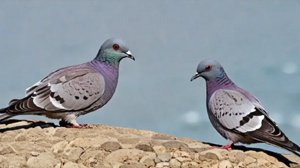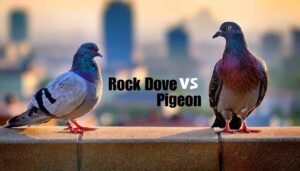Rock Dove
You’ve likely seen a Rock Dove, or as it’s usually called, a Common Pigeon, around your town or city. This bird is known worldwide and has made a name for itself in our urban landscapes, fitting in while still being true to its nature. Listen for its unique cooing sound or check out its colorful feathers. The Rock Dove ties together nature and our communities. In this piece, we’ll dive into the ins and outs of this bird’s life, it’s interesting traits, and how it affects the world it shares with us.
Key Aspects of Rock Dove:
- Physical Characteristics:They are usually gray with two black stripes on their wings and a unique white end. They’re often solid and well-built, with slight variations in color.
- Habitat and Distribution:Initially lived around cliffs and rocks. Now, they fit just fine in cities worldwide. They do well in urban, countryside, and town settings where food and nesting spots are abundant.
- Behavior and Diet: They eat just about anything, often scavenging for seeds and leftover food in cities. They’re recognized for their ability to get back home and close-knit flock communities.
- Cultural and Historical Significance: People have used Rock Doves as mail birds throughout history. They hold symbolic value in different cultures. Their city-residing nature has spurred conservation and management programs.

Meet the Rock Dove, often called the Common Pigeon. It’s a bird that can live just about anywhere. From rocky cliffs along the sea shore to busy city streets, you’ll find it there.
Ever noticed a bird with a gray body and shiny neck perched on a building? That’s likely a Rock Dove. Some look different, though. Seeds and small grains are their main food, but they’ll eat from human habitats too. They’ll even nest in our structures, like bridges and buildings. But they aren’t just adaptable, they’ve made history.
These birds carried important messages before modern technology. Today, they stand as symbols of peace and resilience in the face of urban life. Their existence is a wonderful reminder of how wildlife blends with human life.


